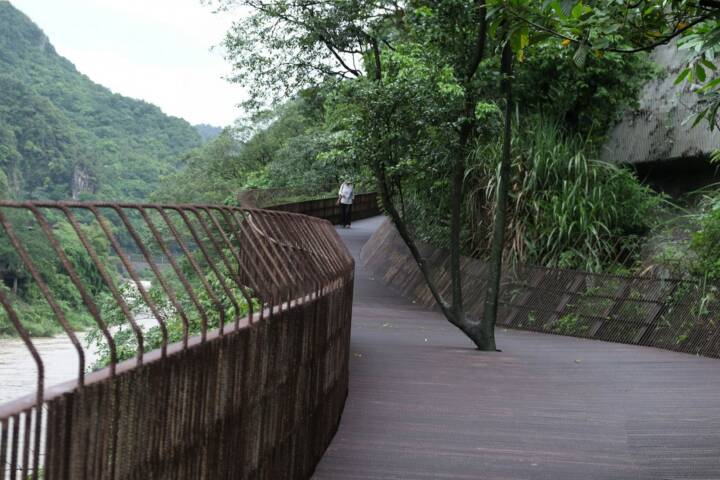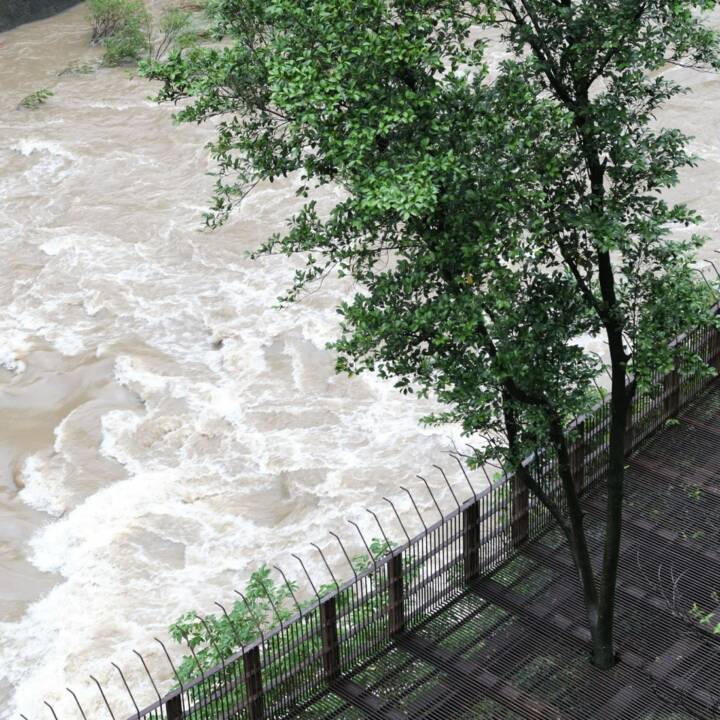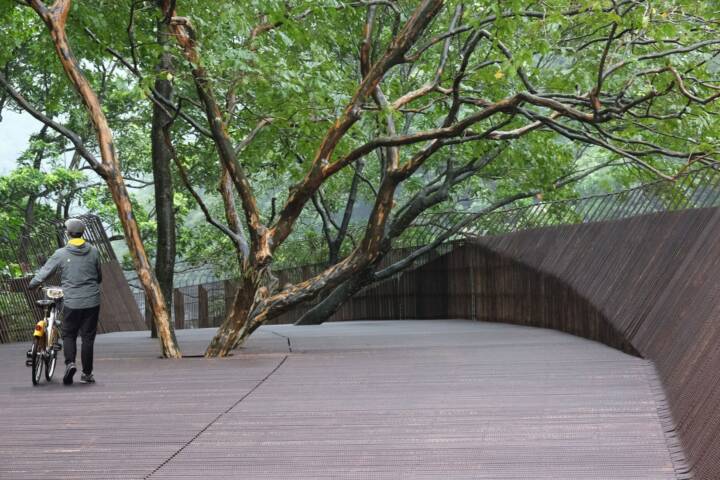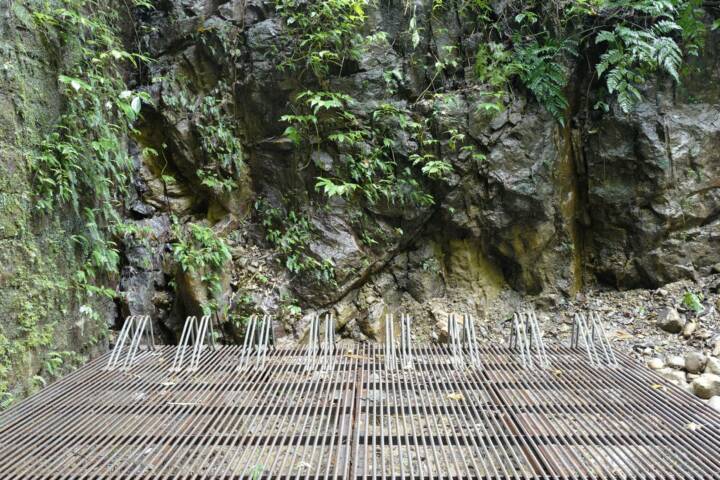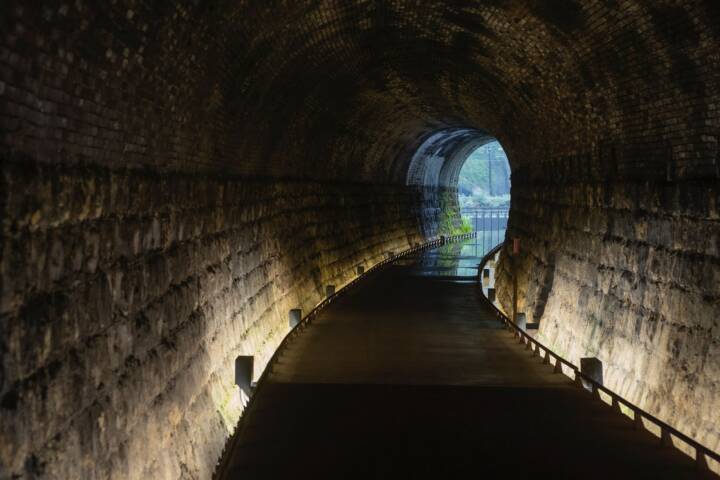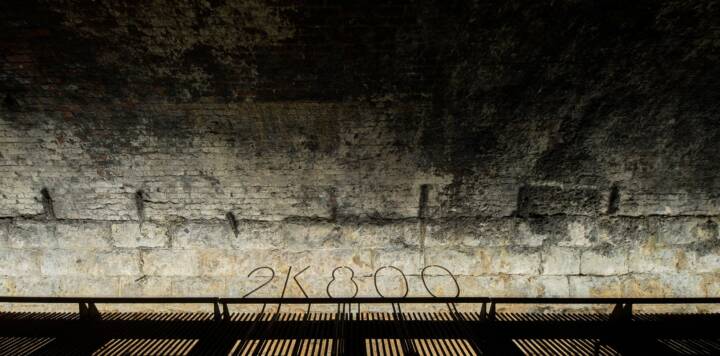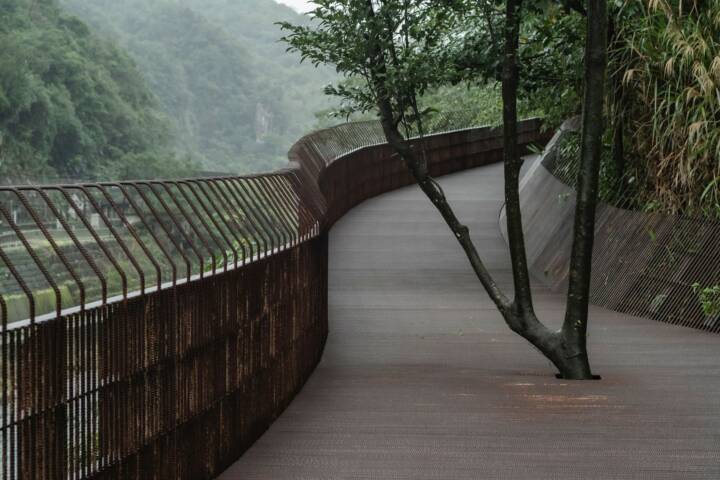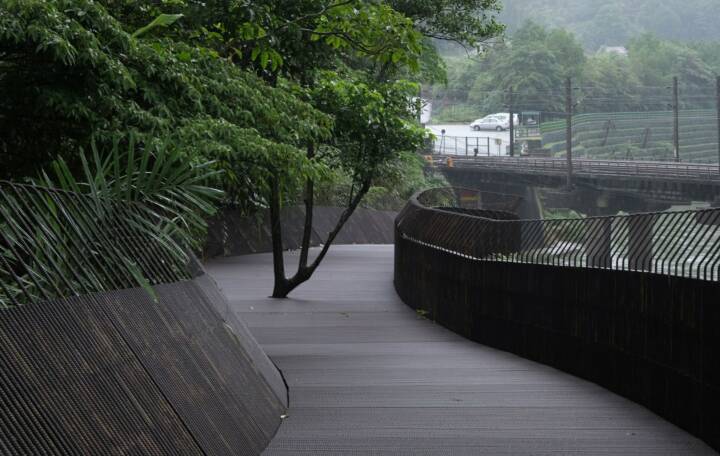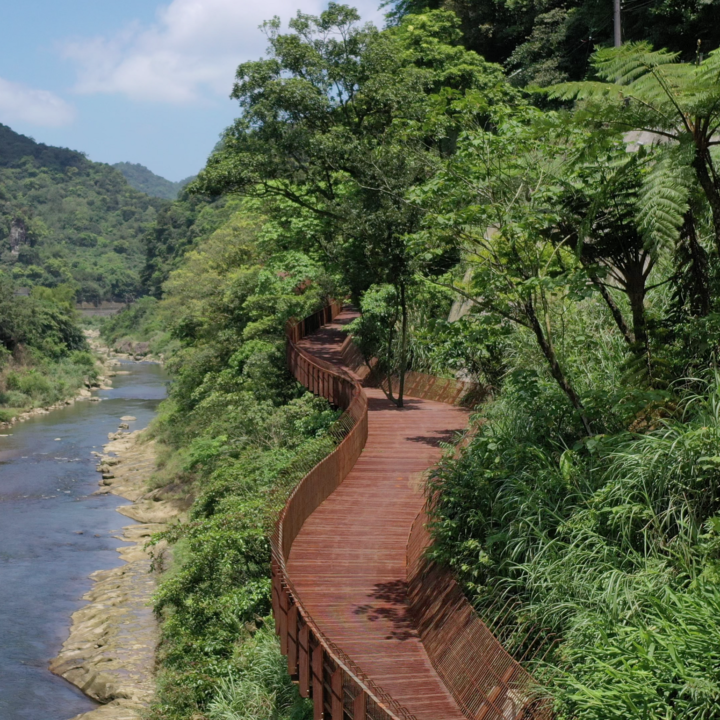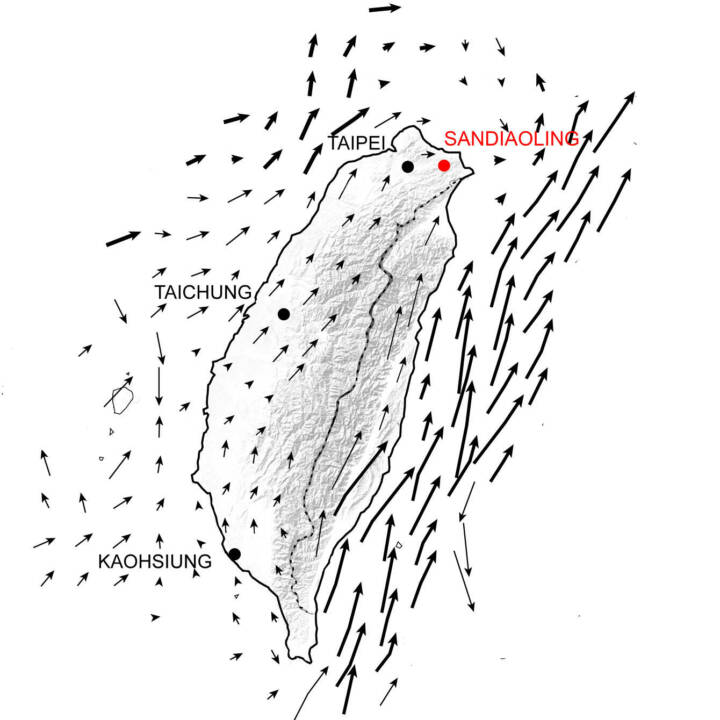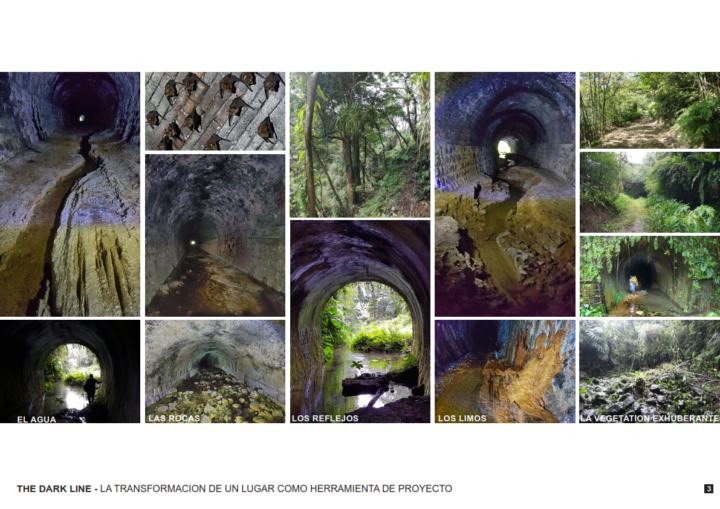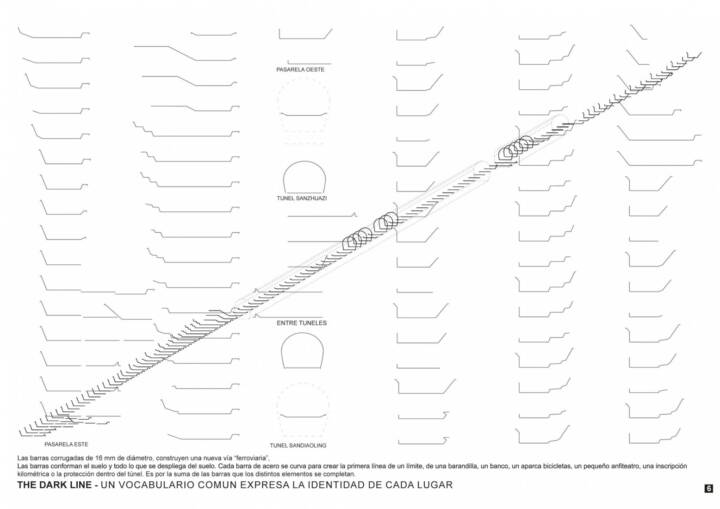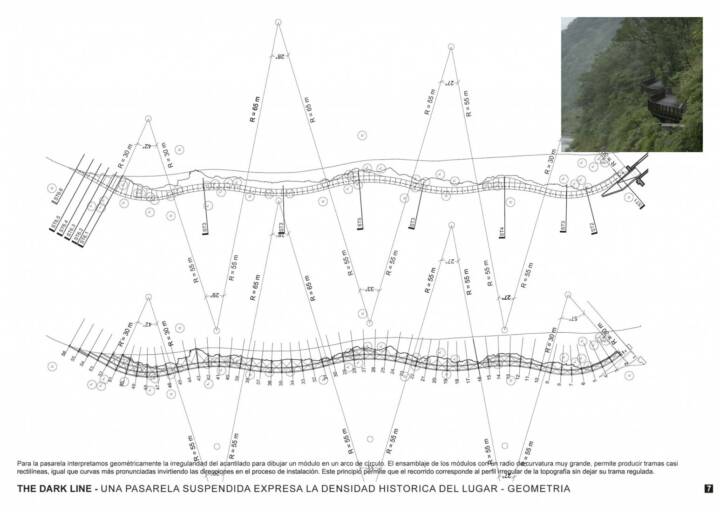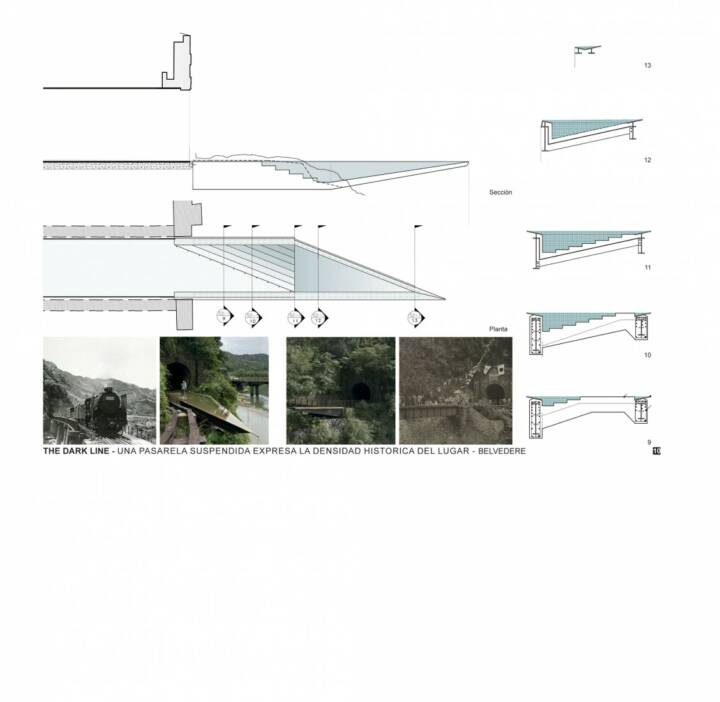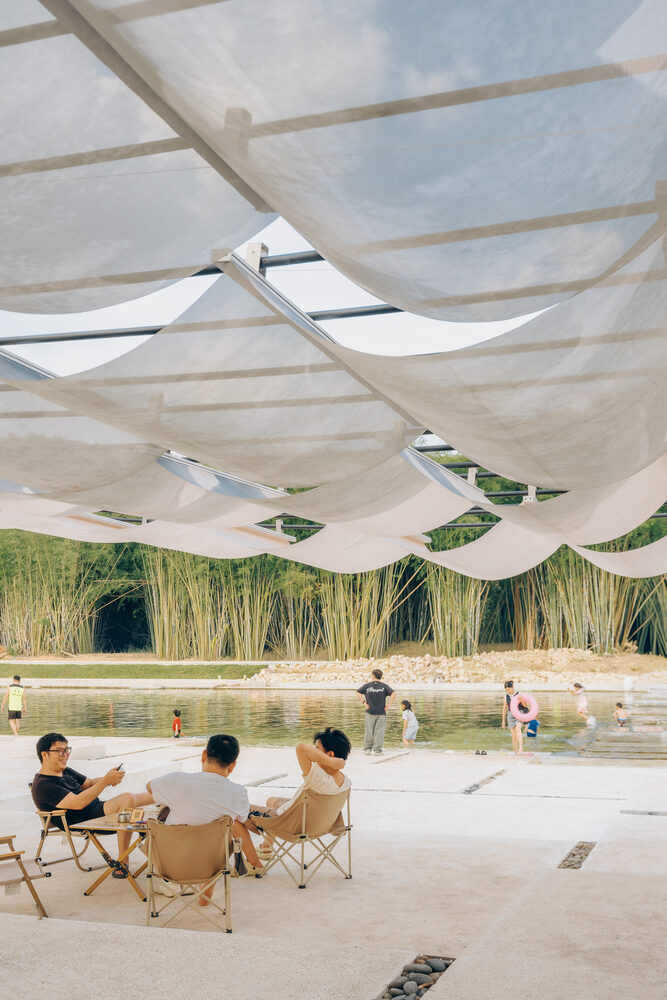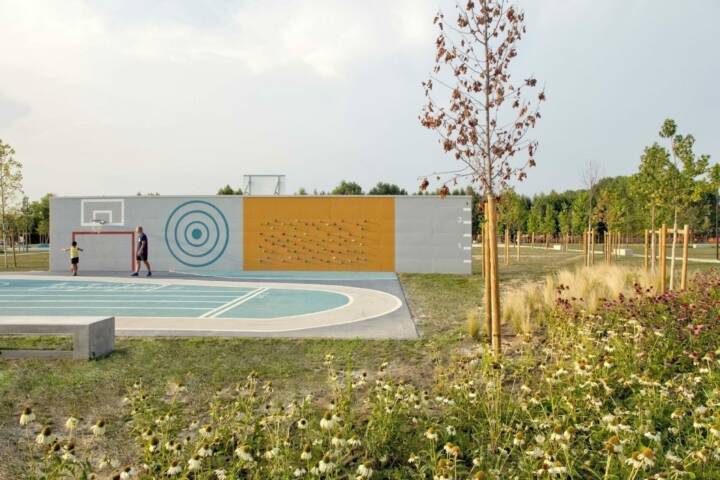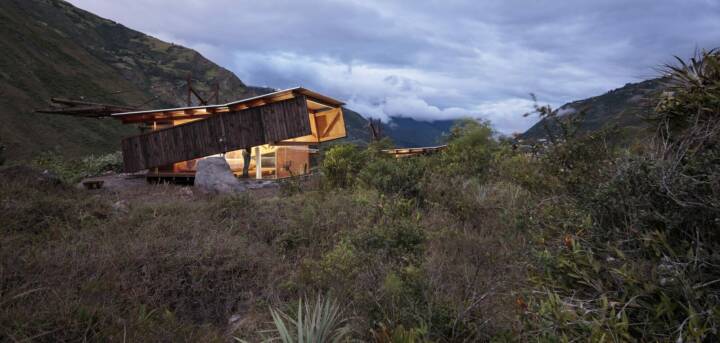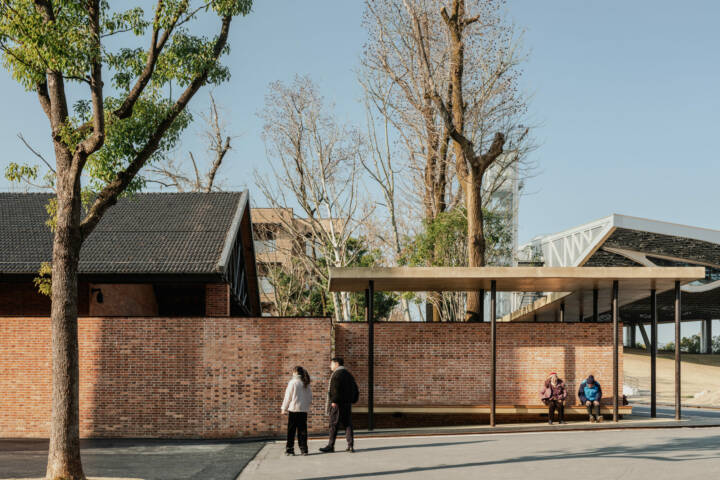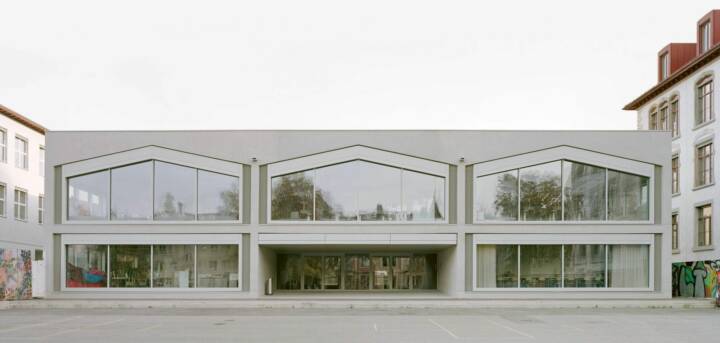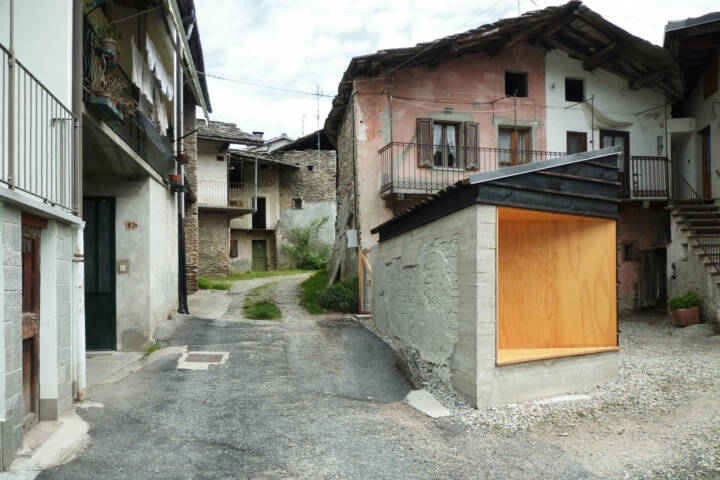Architects: Michele & Miquel Photography: LU Yu-Jui Construction Period: 2022 Location: New Taipei City, Taiwan
THE DARK LINE. CREATION OF AN ECO-HISTORIC ROUTE BETWEEN MUDAN AND SANDAOLING – TAIWAN Passing through the Sandiaoling and Sanzhuatzi tunnels and a new footbridge clinging to the cliffs of the Keelung River The project is located in the heart of a mountainous region between Taipei and Ylan, on the coast Pacific, east of Taiwan. This region has been traversed by multiple routes throughout history: – the roads of the aborigines, – the three roads between Taipei and the Pacific Ocean in the 19th century – the roads and railway lines built by the Japanese government, to meet the needs of the coal industry, at the beginning of the 20th century. At the end of the 20th century, the mines were closed and the railway abandoned.
The development of this heritage, located in a spectacular landscape of mountains, gorges and waterfalls, becomes the main asset to revitalize a region affected by the disappearance of industry. The plan consists in the creation of an eco-historical route, linking the old paths and the abandoned infrastructures: tunnels, galleries, railway facilities, mines… to discover the industrial heritage, but also the landscape. The project presented here is the section of the route between Mudan and Sandiaoling, which passes through an old mine tunnel and continues over a new footbridge that clings to the cliffs of the Keelung River.
Read MoreCloseOur position, Industrial landscapes have an expiration date: the industry abandons the places with the same radicality with which they have been invested. Product of a precise technical-economic system, the infrastructures are emptied as soon as a more efficient system appears. Monumental physical traces remain, where flora and fauna, quick to detect faults, make their habitat. In few places like this, geological and biological phenomena occur so quickly. It is now a hybrid environment in which traditional distinctions between nature and culture are blurred. We decided, from the beginning of the project, to keep the tunnel in all its historical thickness, just as it is, without restoring it, and to show the transformation of the place since its abandonment, including the floors rocky and sandy accumulated by typhoons, the flow of infiltration water, the lush vegetation that covers the monumental facades, and the trees that are found along the entire route. Seeing the encroaching vegetation, the flowing water and the power of geological phenomena, the technical feat of the work becomes more evident and squeezes the power of the change of time. Recording that the tunnel, through which the steam locomotives hummed, has been transformed into a peaceful, humid cavern, does not mean giving up giving a historical interpretation of the place.
On the contrary, it is to broaden the spectrum of history. The project It has been necessary to carry out important works to allow the opening to the public of this itinerary: going through a tunnel subject to possible landslides, installing a walkway on a ground, “without touching it”, building a complex structure on a vertical and unstable ground, . .. and all, without cutting any trees. The challenge was to make it as discreet and “natural” as possible. Hide the efforts of the project and the work to let the old infrastructure and the landscape speak for themselves, minimizing competition with the existing with the use of a single material and a single system: -16mm thick corrugated steel bars diameter, constitute all visible matter. -placed parallel, one after the other, 40mm apart, with a 24mm gap between them. With this choice we place ourselves between the two great works that have impacted the place in the last 100 years: the construction of the train track and the subsequent action of nature, evoking, through matter, the railway and through emptiness, landscape. The bars make up the floor and everything that unfolds from the floor. Each steel bar is curved to create the first line of a limit, a railing, a bench, a bicycle rack, a small amphitheatre, a kilometric inscription or protection inside the tunnel. It is by the sum of the bars that the different elements are completed. This “infinite” repetition ends up constituting a single whole that makes us forget its presence to give way to a nature that appears everywhere: in the distance, as a background frame, beyond the catwalk; in the proximity, through the ground, where we see the rocks and the sand, we hear the water, we touch the vegetation. At the end of the tunnel, a pool of water reflects the sky. It is the void left by the old bridge over the Keelung River, collapsed by the floods.
Text provided by the architect.


